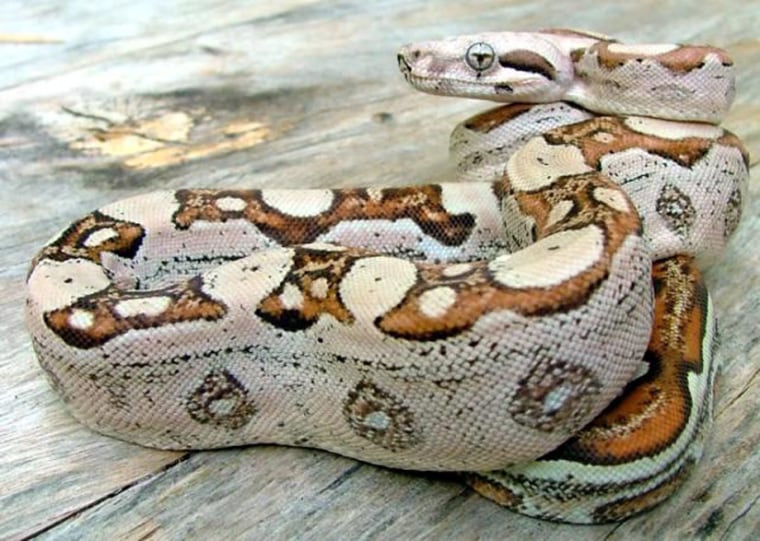A boa constrictor mother has given "virgin birth" to 22 female offspring, all of which have no father and are half-clones of their mother, according to new research.
The discovery adds boa constrictors to the list of animals that can give fatherless birth. The list so far includes other snakes, at least three species of sharks, the Komodo dragon and some other monitor lizards, certain termites, and more.
Researchers now even think some dinosaurs may have given virgin birth, since this phenomenon has now been reported in all lineages of jawed vertebrates, except mammals, and in a number of invertebrate species.
"Only with the development and application of molecular tools have we truly begun to understand how common this form of reproduction may be," lead author Warren Booth told Discovery News.
Booth, a research associate at North Carolina State University's Department of Entomology, and his team first suspected something was up when the mother boa constrictor gave birth, twice, to a total of 22 caramel-colored females. The males housed with the female did not carry the gene for this recessive color trait.
The scientists next extracted and analyzed DNA from skins shed by the mother, the males and the caramel-colored offspring. This DNA fingerprinting, functioning like a paternity test, determined that the offspring exhibited a sex chromosomal arrangement of WW, "something never before naturally observed," Booth said.
He explained that male snakes have the sex chromosomal arrangement ZZ, while females are ZW. Numerous prior studies concluded that the WW pairing was not viable.
"Our work essentially upends decades of scientific theory on reptile reproduction," said Booth.
He and his colleagues believe the births happened as a result of what's known as automatic parthenogenesis.
"Basically, like sexual reproduction, the offspring here received one set of the mother's chromosomes when they split during the egg production process," he explained. "However, instead of combining with a sperm that would contain the complementary second set of chromosomes from the father, the egg fuses with a copy of itself, stimulating embryonic development."
The findings are published in the latest Royal Society Biology Letters.
Gordon Schuett, whose lab at Georgia State University first described parthenogenesis in snakes, told Discovery News that he agrees with the conclusions made in the new study, "mostly because (the researchers) provide compelling molecular data."
Schuett further expressed surprise "that there was evidence of viable WW females, which is unknown in snakes and other reptiles."
The mother boa constrictor described in the latest study was not technically a virgin, since she had previously produced a litter sexually. The scientists think boa females may therefore have the ability to alternate between sexual and asexual reproduction.
"One other interesting fact about these snakes is that if the offspring can reproduce sexually, all offspring they produce will be female," Booth said. "They are genetically incapable of producing male offspring. Only by their female offspring can males be produced again."
Aside from resulting in a possible slew of females, "virgin births" could harm genetic diversity within species because what is essentially occurring is "an extreme form of inbreeding," according to Booth.
Given that such births may be common for many animals, he hopes zoos and other keepers of rare and endangered reptiles will now more carefully monitor reproductive events.
